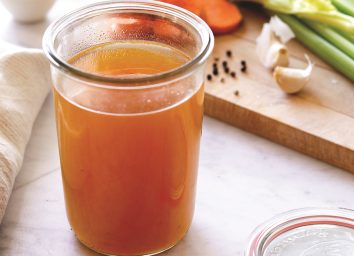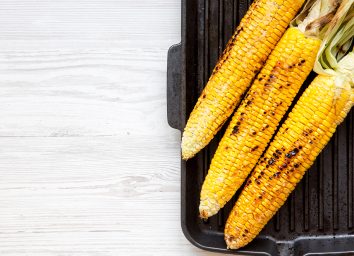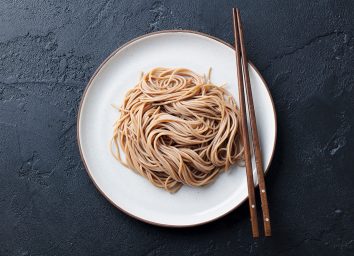12 Popular Korean Dishes To Order At a Restaurant
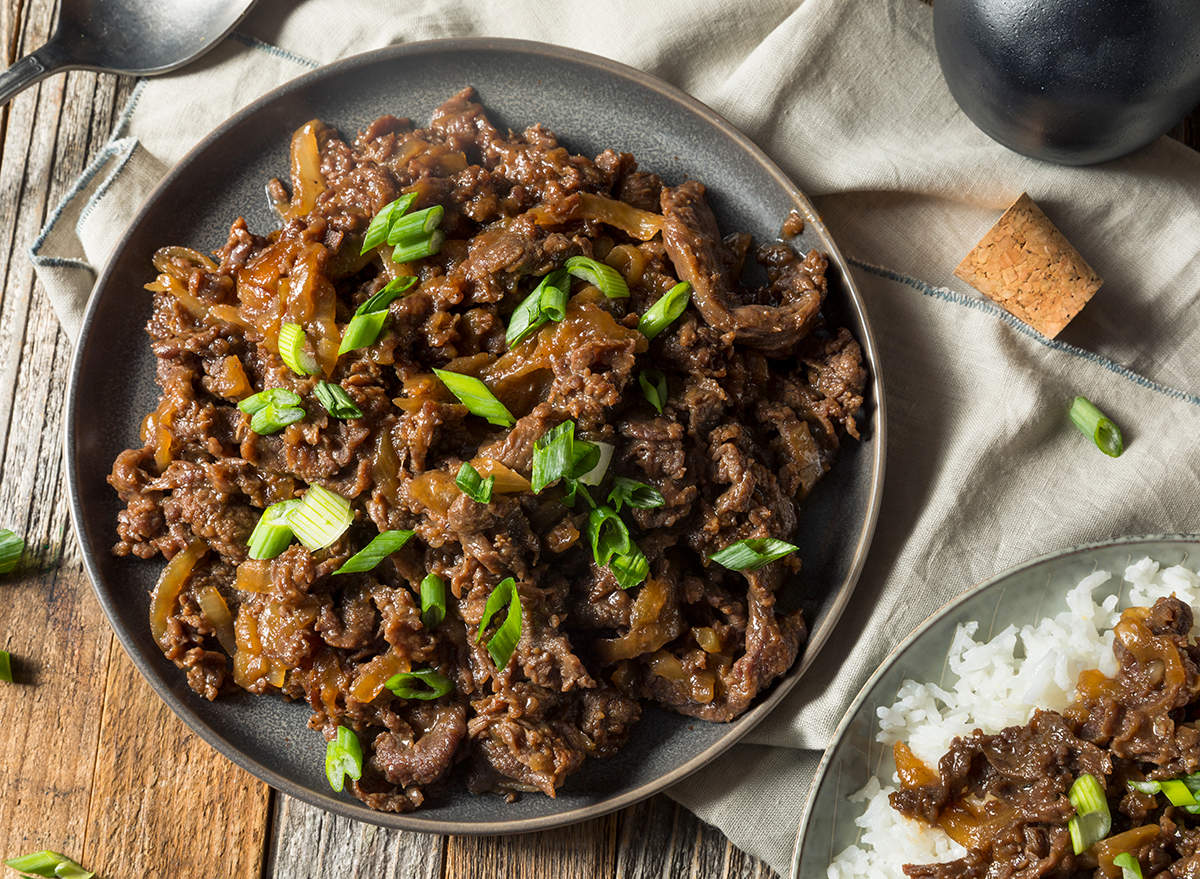
Navigating the world of Korean food can be intimidating. Even at a Korean barbecue restaurant where you can be guided through a tasting of different meats, the menus can be long and full of unfamiliar dishes. As an adopted Korean American, even I get overwhelmed by the amount of banchan (small side dishes, like kimchi or marinated spinach), stews, soups, appetizers, and meats available.
Rather than trying to explain every single Korean dish you could ever know, I've narrowed it down to a dozen essential Korean foods you should order if you've never had Korean food before. And if you are not a first-timer and looking to branch out, I hope this guide will help you too.
Appetizers
Pajeon
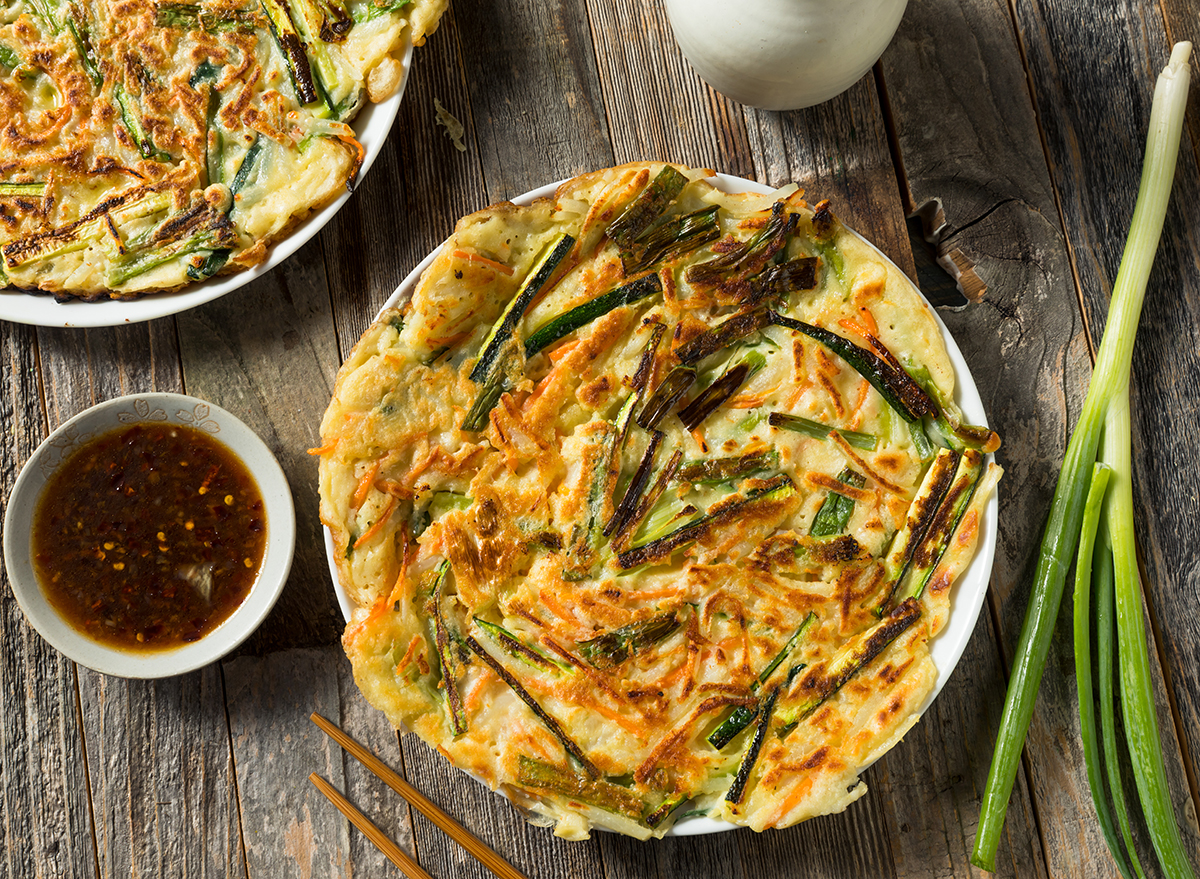
Translation: Savory scallion pancake
There are many types of jeon in Korean cuisine, but the most popular savory pancakes are pajeon, a scallion pancake made with rice flour, wheat flour, and eggs. They can also be filled with vegetables (yachaejeon), seafood (haemuljeon), kimchi (kimchijeon), or a combination of them. It comes to the table as one big pancake that is snipped into wedges and can be eaten with chopsticks or your hands.
Mandu
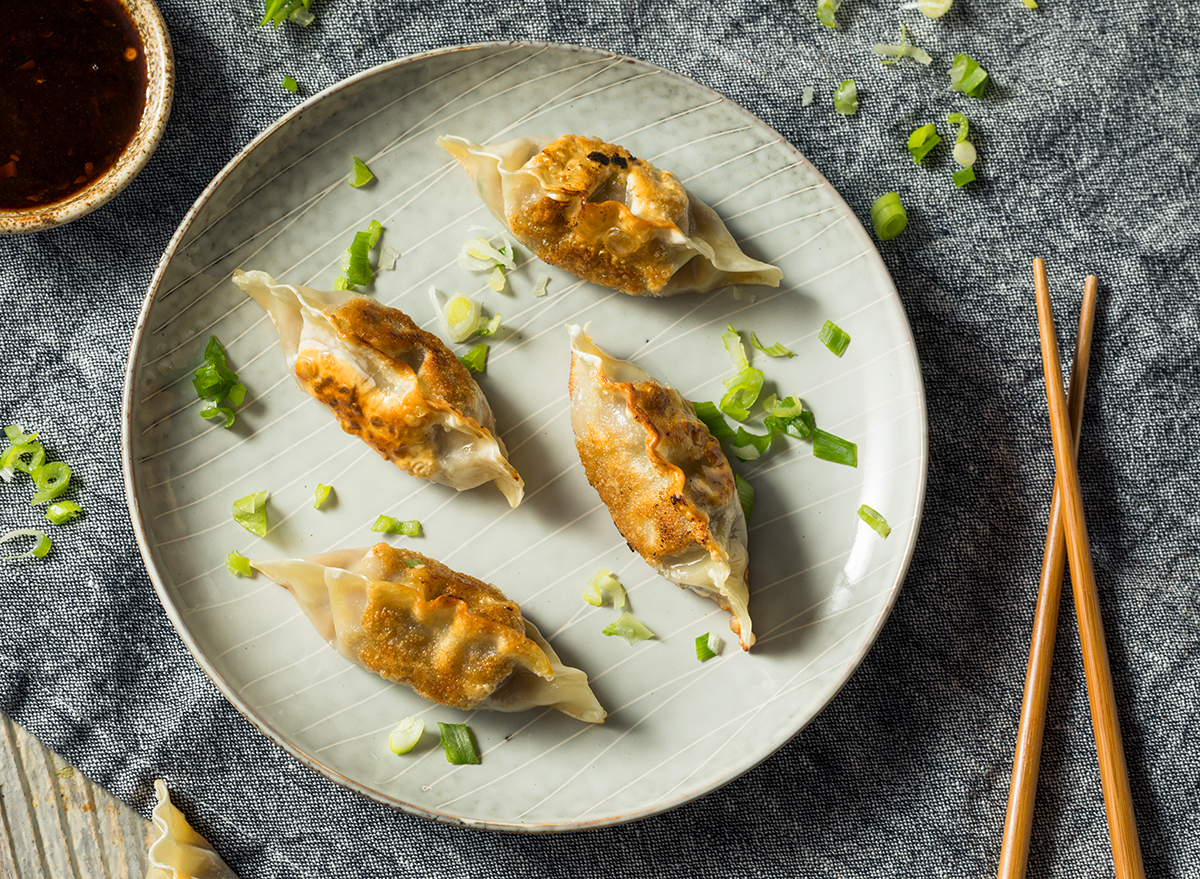
Translation: Dumplings
Every culture seems to have a dumpling, and Korea's is mandu. There are many different styles of mandu: gogi mandu (meat-filled), yachae mandu (vegetable-filled), saewu mandu (shrimp-filled), kimchi mandu, and more. A popular combination is beef, pork, and tofu with napa cabbage and garlic chives, but they can also have bean sprouts, mushrooms, zucchini, and even cut up chewy sweet potato starch noodles. They can be pan-fried, boiled, or deep-fried, but are not often steamed like in other Asian cuisines.
Gimbap (or Kimbap)
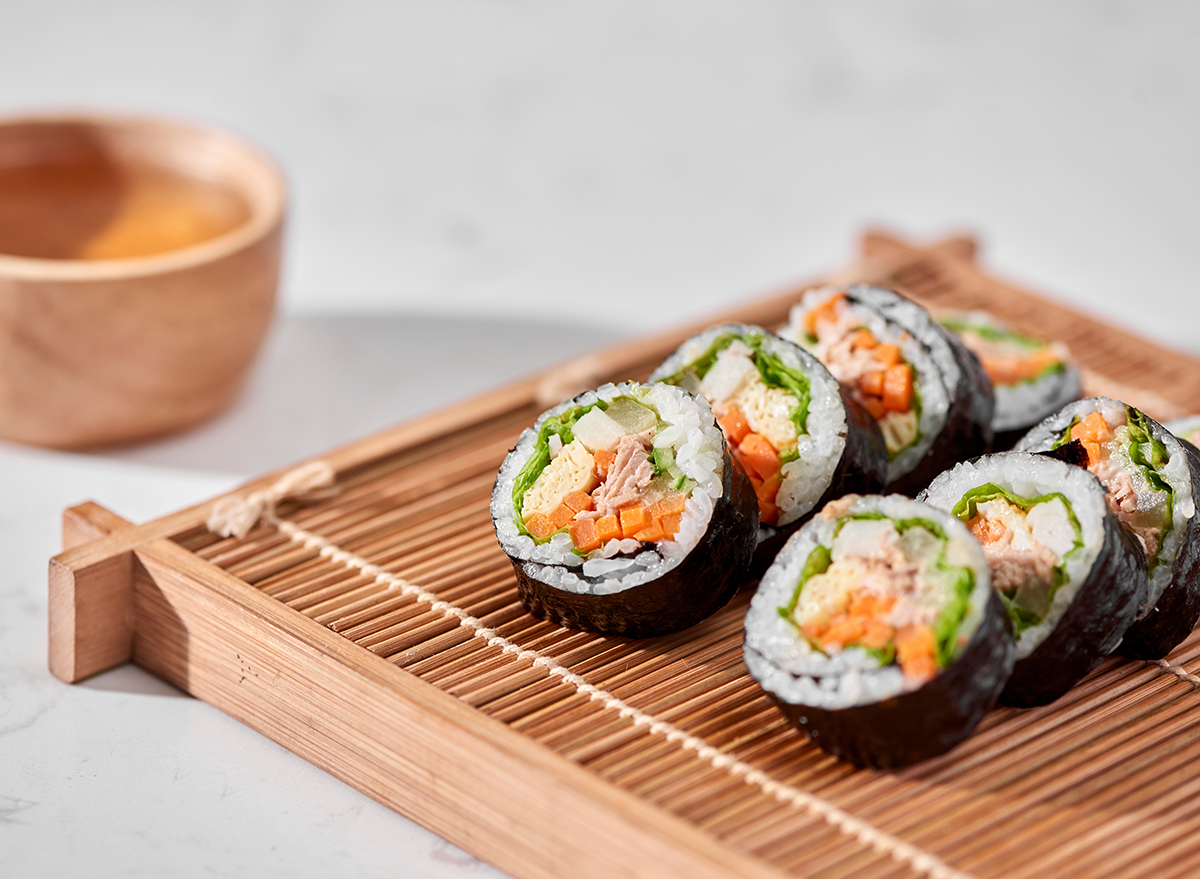
Translation: Seaweed rice rolls
In the simplest terms, gimbap is to Korean cuisine as sushi is to Japanese cuisine. Gim (seaweed) on the outside, cooked short-grain rice inside, and fillings rolled in the middle. Gimbap often uses vegetables (carrots, cooked spinach, cucumber, pickled radish), scrambled egg sheets, tofu, cooked meat (like bulgogi), and sometimes even canned tuna. There are versions with Spam and imitation crab, but you don't often see raw fish in gimbap the way you would with sushi.
Side dishes
Banchan
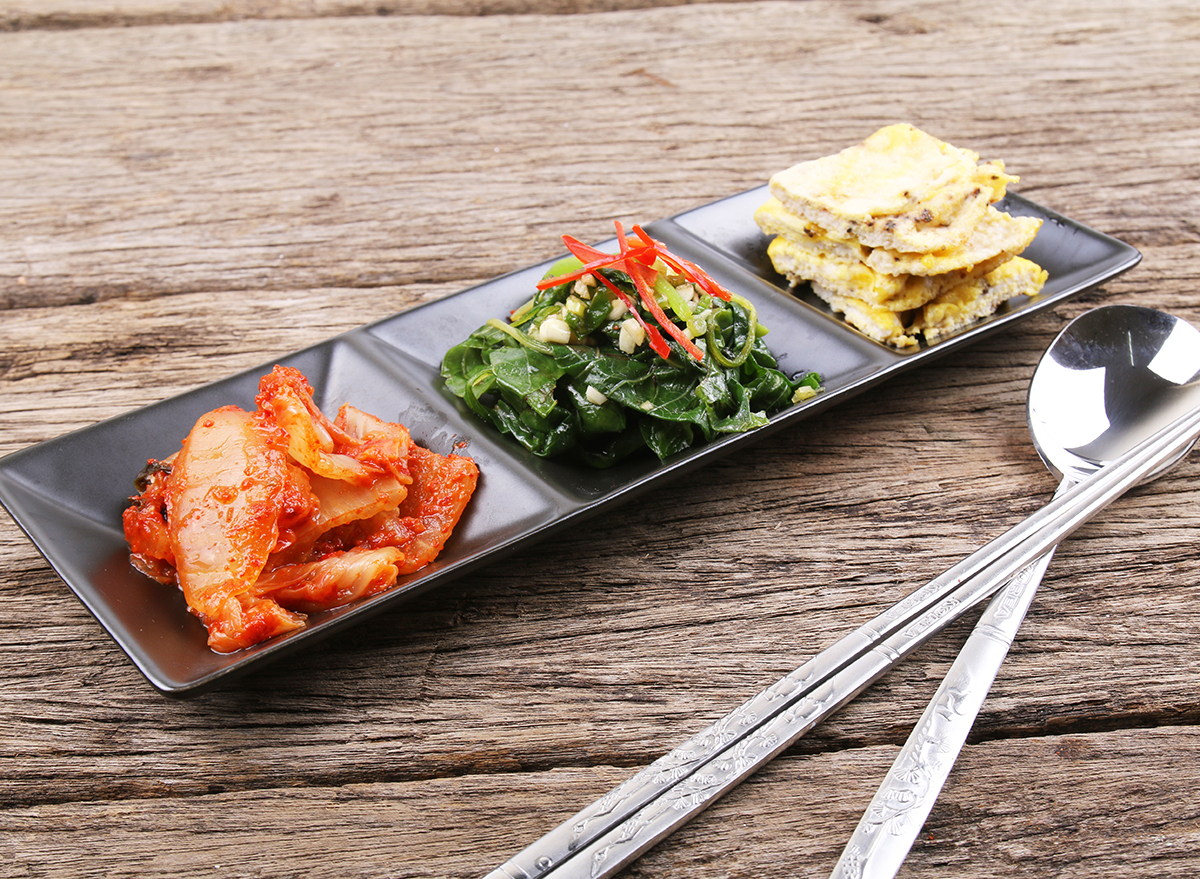
Translation: Small side dishes
Every Korean restaurant will bring out an array of small banchan to the table as an accompaniment to the meal. The selection usually consists of marinated vegetables such as spinach or soybean sprouts; a few types of kimchi, usually spicy fermented cabbage, daikon radish, or other vegetables; Korean potato salad; stir-fried fish cakes; dried spicy squid; and more. Each restaurant has its own version of banchan, and they always have unlimited refills, so eat throughout the meal and don't be afraid to ask for more!
Tteokbokki
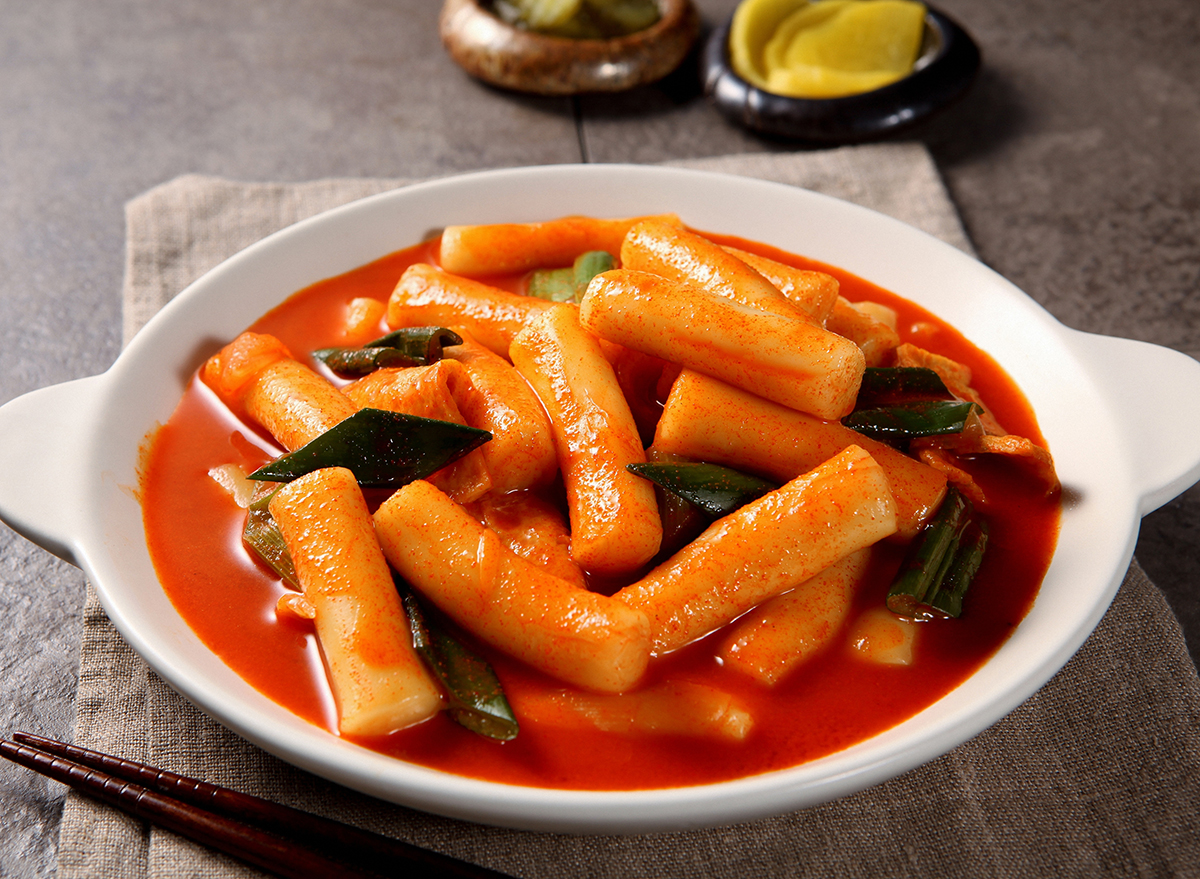
Translation: Spicy stir-fried rice cakes
These chewy cylindrical rice cakes (similar in texture of Japanese mochi) are the ultimate Korean street food. They are stir-fried in a spicy sauce made of gochujang chili paste, soy sauce, gochugaru chili flakes, garlic, and a little sugar. They are often mixed with thinly-sliced fried fish cakes, scallions, and sesame seeds. It is hard to explain why they are so satisfying and almost addictive, but if you see them on the menu, order them! You won't be disappointed with the fun chewy texture and flavor bomb of spice.
Japchae
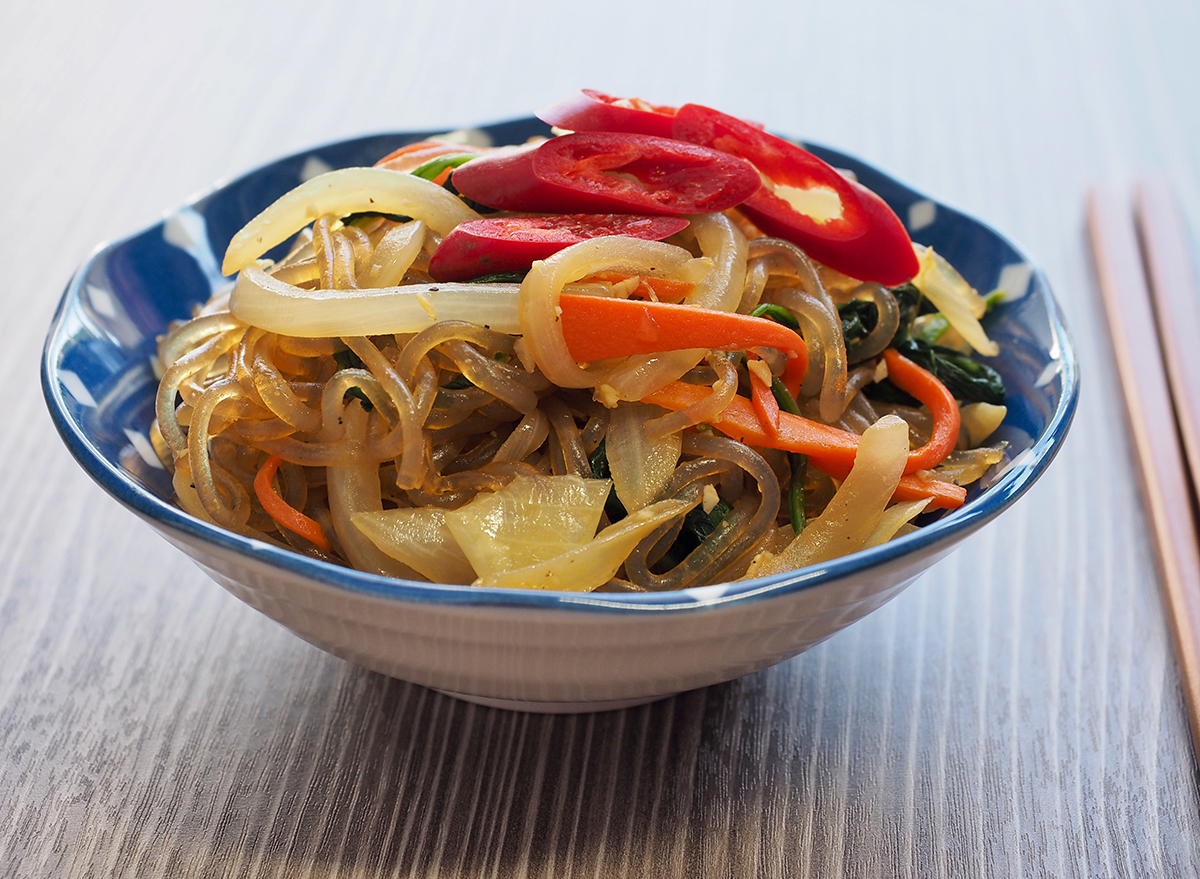
Translation: Stir-fried sweet potato starch noodles
Sweet potato starch noodles are almost translucent and chewy, a bit slippery, and a little sweet. When stir-fried with a bunch of vegetables (and sometimes bits of bulgogi or other meat), sesame oil, garlic, and soy sauce, they are irresistible and perfectly savory. They're fun to slurp and pair with any meats and stews.
Mains
Bulgogi
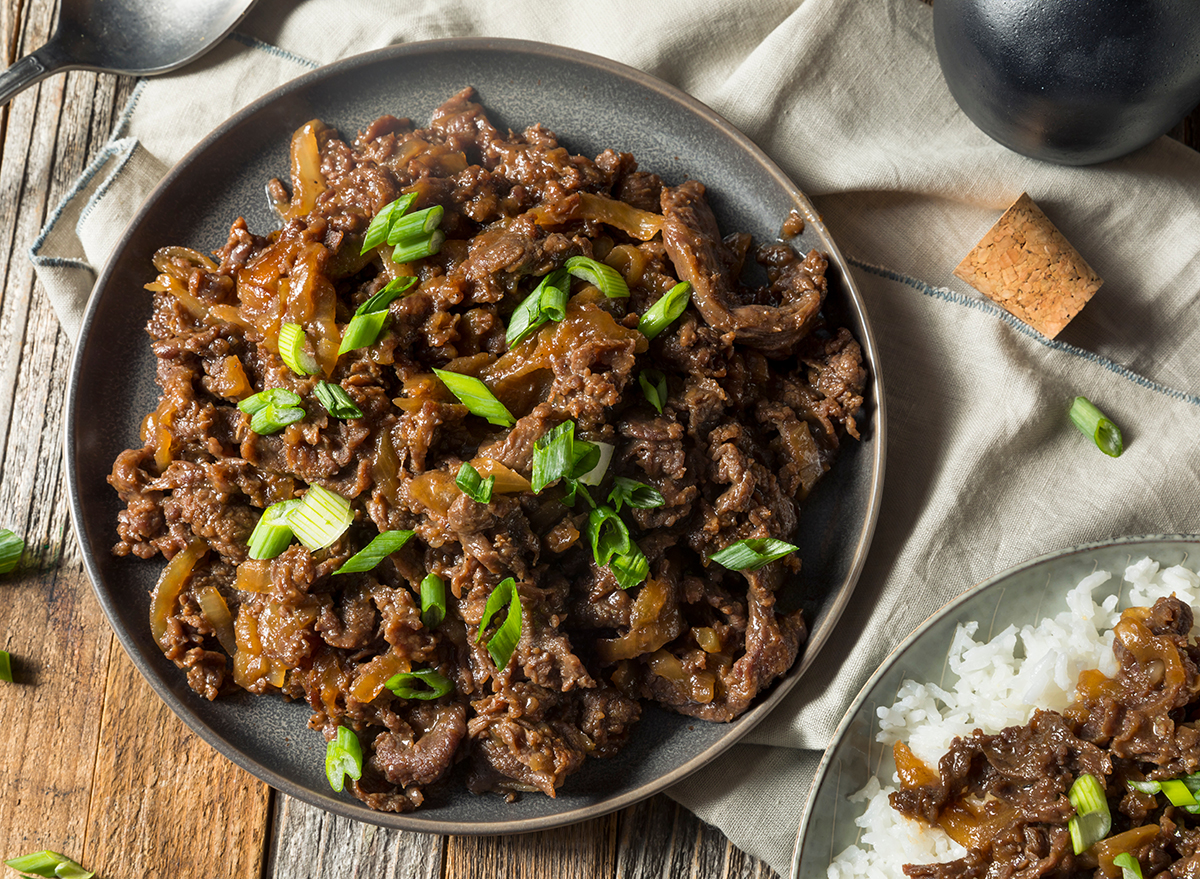
Translation: Marinated Korean BBQ beef
The most popular dish at a Korean BBQ restaurant is bulgogi, thinly shaved beef (usually ribeye or sirloin) marinated in a sweet and savory sauce made of soy sauce, sugar, and grated Korean pear, which adds sweetness and tenderness. It gets a nice char on the grill and cooks very quickly. Eat it with rice and kimchi, a fermented spicy cabbage that complements the sweetness and cuts through the richness of the meat.
Bibimbap
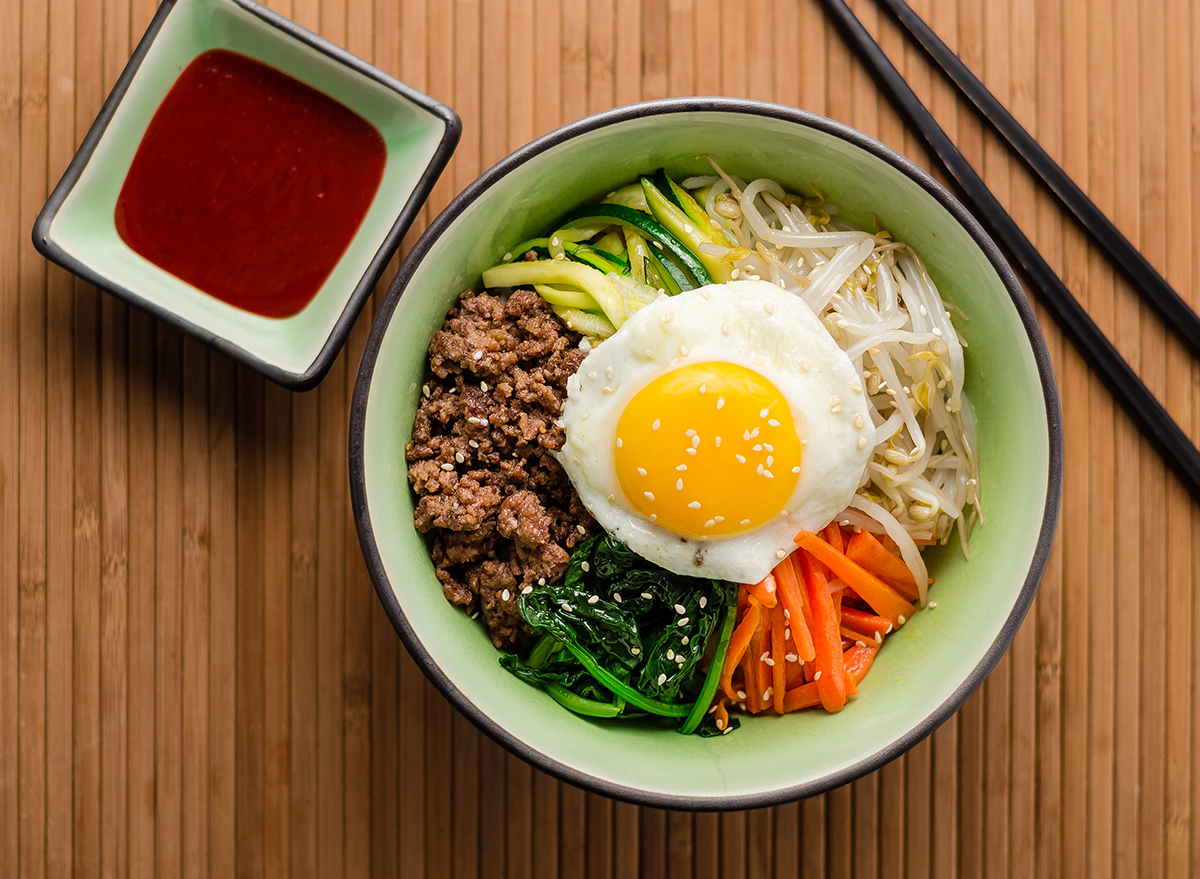
Translation: Meat and vegetable rice bowl
Bibimbap translates to "mixed rice," and is served in a hot stone bowl that sizzles when it comes to the table. The bottom of the rice is often crispy from its direct contact with the pan, and is stirred around with various vegetables (soybean sprouts, carrots, mushrooms, spinach, bell pepper, etc.) and meat (bulgogi, pork, chicken) or tofu. Unless you're vegan, it will come with a sunny-side-up egg on top that is broken and combined with the rest of the dish. Gochujang, a Korean fermented chili paste, is also added.
Kimchi Jjigae
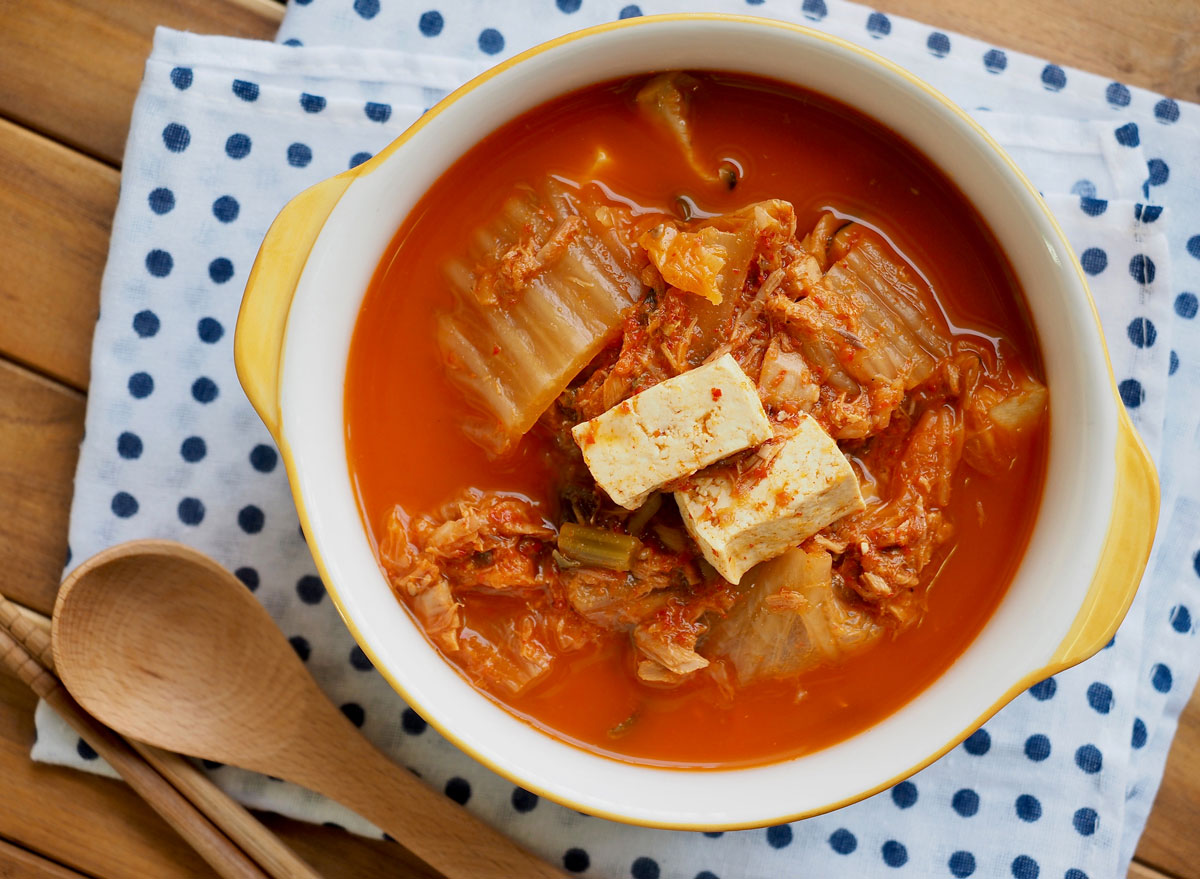
Translation: Spicy kimchi stew
The most popular stew in Korea is kimchi jjigae. It's a spicy, fiery-red, umami-rich stew made with kimchi, onion, tofu, green onion, and usually some form of pork (shoulder or belly). It is thinner than an American beef stew, and served with rice on the side. It can range in spice level depending on how much gochugaru (Korean hot pepper flakes) and gochujang (hot pepper paste) are used in the broth. You can order it as a main dish for one person, or to share at the table alongside Korean barbecue or other dishes. If you are spice-averse, try doenjang jjigae, a similar stew made with soybean paste (similar in flavor to Japanese miso) that is slightly salty.
Bossam
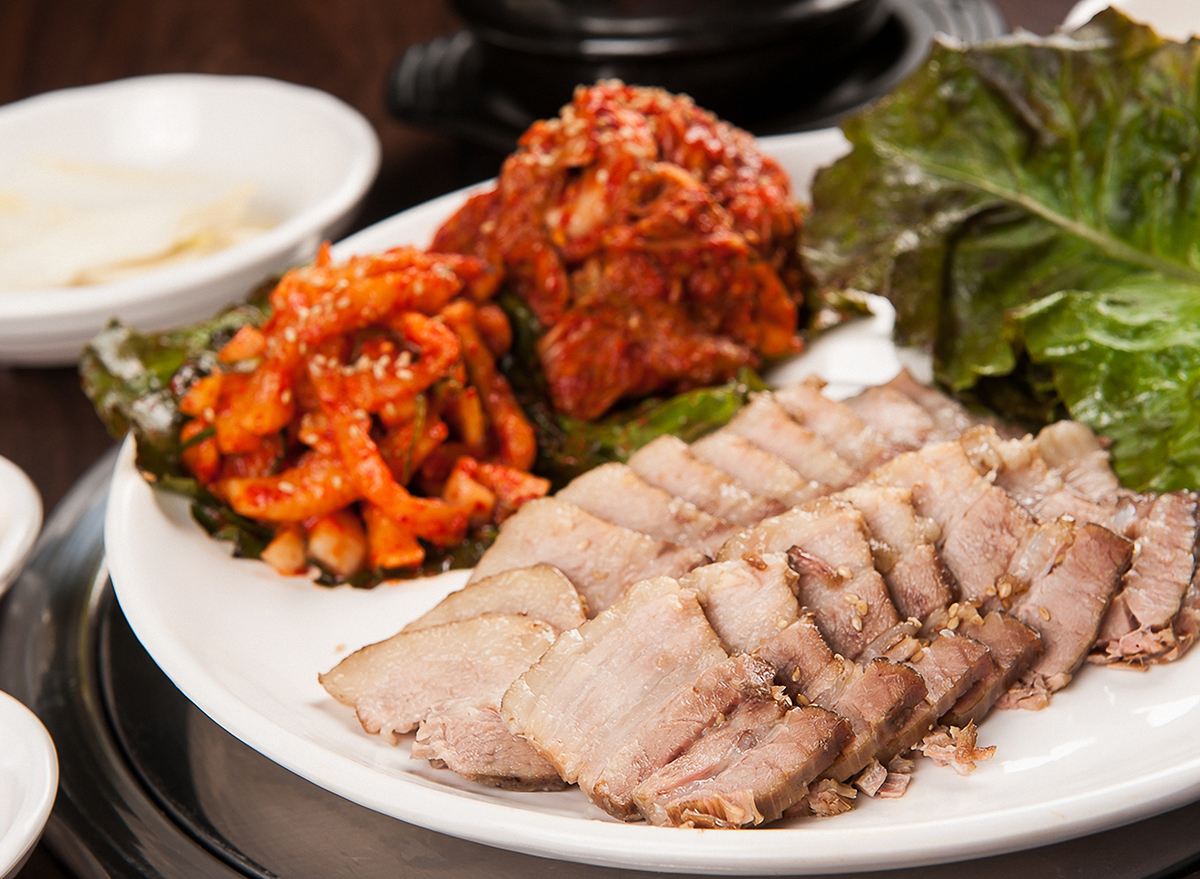
Translation: Boiled pork belly wraps
This is a special occasion dish. When you think of pork belly, you probably think of crispy-skinned meat or bacon. Bossam is boiled pork belly cooked in a flavorful brine over gentle heat. So it's no wonder it's incredibly tender. "Ssam" means "wrapped" in Korean, so thin slices of pork are tucked into salted Napa cabbage leaves with radish salad and salted shrimp. You can also order grilled pork belly, which is not the same but is also nice wrapped in lettuce or cabbage at the table.
Sundubu Jjigae
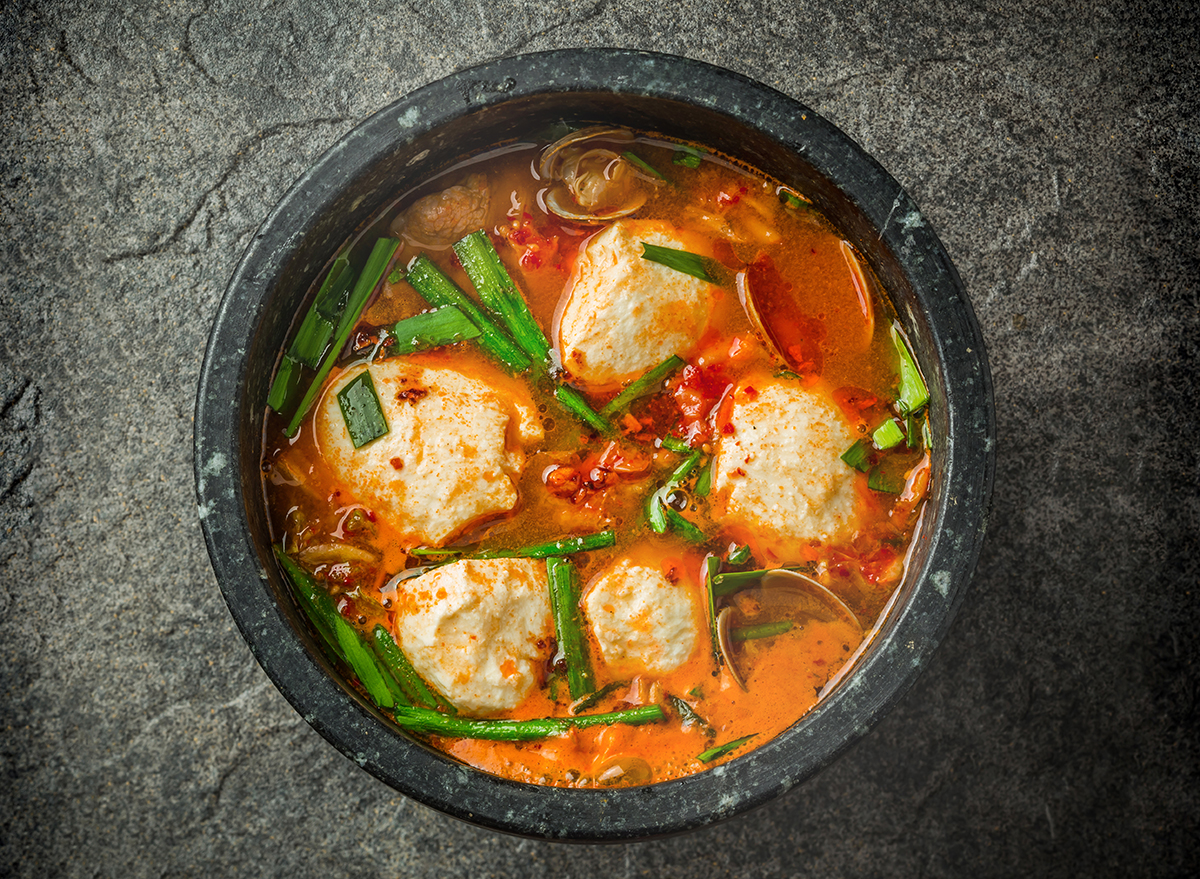
Translation: Spicy soft tofu stew
One of the most comforting Korean dishes is sundubu jjigae, a spicy stew with silken tofu that melts in your mouth. It can be made with meat or seafood. The base is an anchovy-kelp stock that is light and gives the stew a nice backbone of earthy, well-seasoned flavor. If eyou order it as a main dish, get a side of rice (which will also help with the spiciness). But it can also be served with Korean BBQ and other entrees as a side dish.
LA Galbi (or Kalbi)
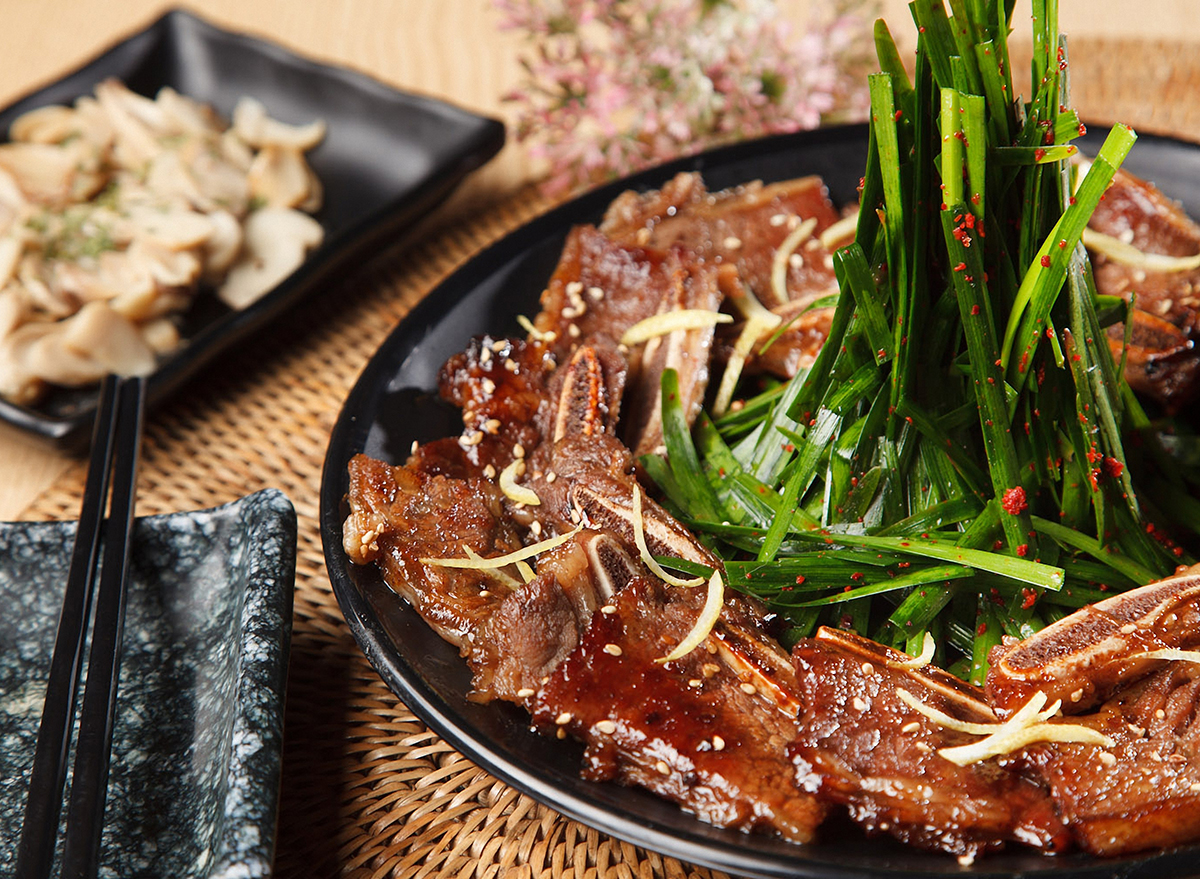
Translation: BBQ short ribs
Galbi is short ribs, but not the short and stout versions you may have had braised in red wine. This barbecued meat is made with the flanken cut, which is thin and sliced across the bones. The name comes from Korean immigrants allegedly making it popular in Los Angeles. The marinade is similar to bulgogi, a sweet and savory glaze made with soy sauce, mirin, Korean pear, scallion, garlic, ginger, sesame oil, onion, and sugar. It cooks quickly on a grill at a Korean restaurant and gets nice charred edges. The texture is more chewy-tender than thin-sliced bulgogi.
